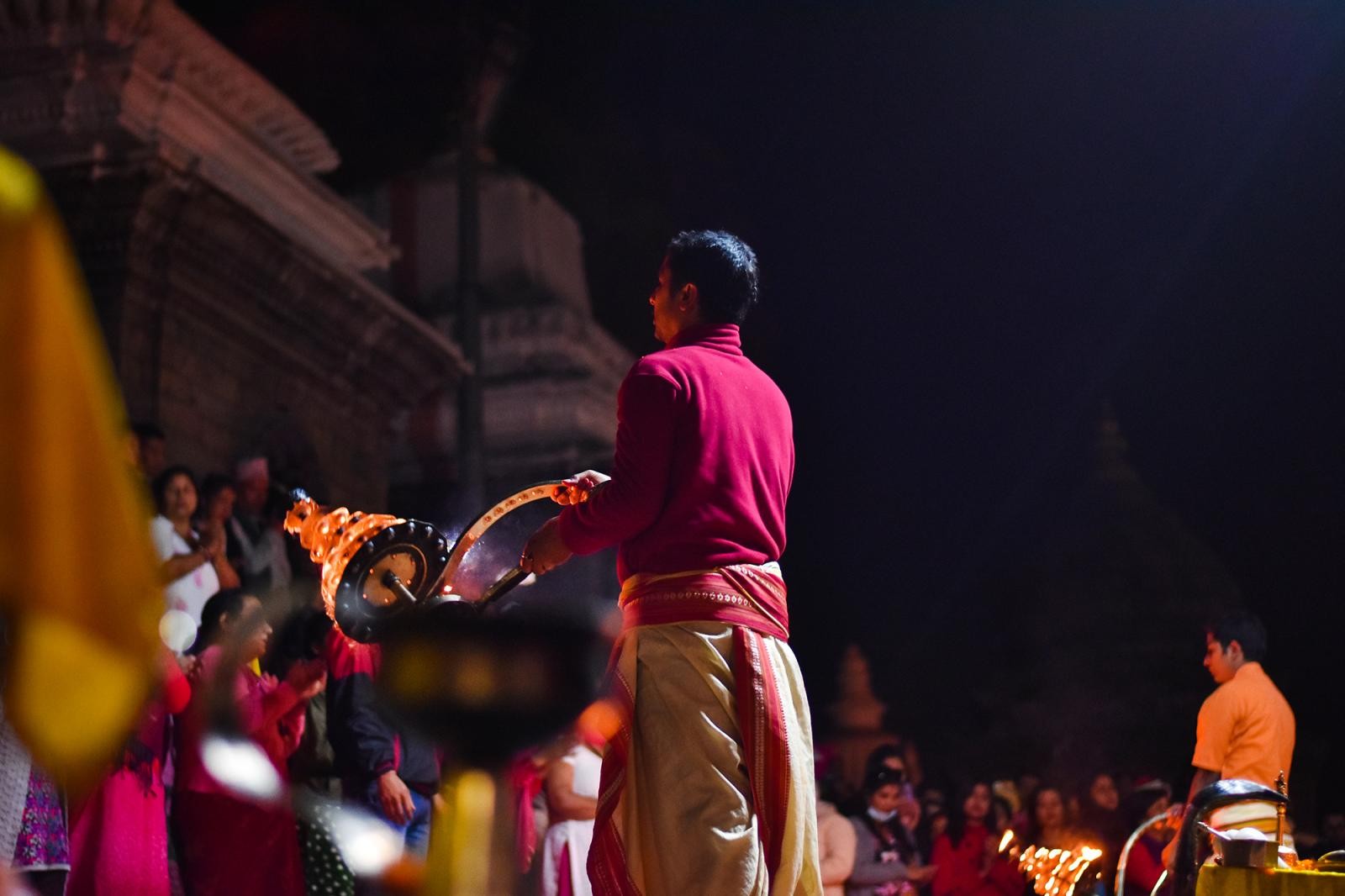In Hinduism, Monday is the day dedicated to Lord Shiva. To honour the mighty destroyer, Shiva devotees visit the temple and some even observe a fast. For the past 10 years, the temple has also been organising an evening aarati to appease Lord Shiva.
The Pashupatinath temple is a very peaceful place. The temple was built in the 5th century and has a lot of history behind it as it is the oldest Hindu temple in Kathmandu. As I sit on the steps and gear up to watch the famous aarati a priest tells some tourists to take off their shoes if they wanted to sit on the stairs. Even though non-Hindus are prohibited from entering the temple, they can still visit other places around the temple premises like the Ghats (river banks) and most importantly the Aarati area opposite to the Pashupatinath Temple.

The priest prepares the place as he and a few of his helpers assist him to get the necessary items. As it gets darker, more people start to arrive. The place is filled with a lot of tourists but the local attendance was worth noting too as people of all ages were there to witness the aarati. Everyone starts settling down just as one of the priest starts to play bhajans (hymns) and the aarati begins.


Three priests line up on the bank of Bagmati from where they get a direct vision of Pashupatinath Temple and the aarati begins. On the opposite side, there are people performing the last rites. There are loved ones, weeping and consoling one another. As the smoke from the other side starts settling down, the priest begins the aarati.


The Aarati starts with coal incense that is burned with camphor and different kind of woods. As that is being done, a group of devotees start lighting up three large structures with fifty-four diyos (small oil-lamp) which is raised to Lord Shiva. The priests first dip the lights four times on the bottom; and then circles it seven times on the top in perfectly coordinated motions. The way the Aarati is moved is a standard ritual. The motions at the bottom symbolise the worship of the Lord’s feet, and those on the top are for his head. Each of the items of worship is rotated in the same manner and is the same every time. The aarati looks beautiful in dark due to the motions of the diyos.

The bhajans are an integral part of this aarati and those who come here every week know them by heart. Some devotees to pay their respects to Lord Shiva even do the Tandav dance which is a celestial dance performed by Lord Shiva.
It is advised that you reach the place an hour before to get good seats to watch the aarati. The timing varies from season to season and during the winters the aarati stars at 6 PM. Apart from this priests and devotees perform daily ritual worships and offer prayers at the temple in the morning, day and evening time.

Text: Shashwat Pant
Photo: Saroj Patrabansha
Also Read